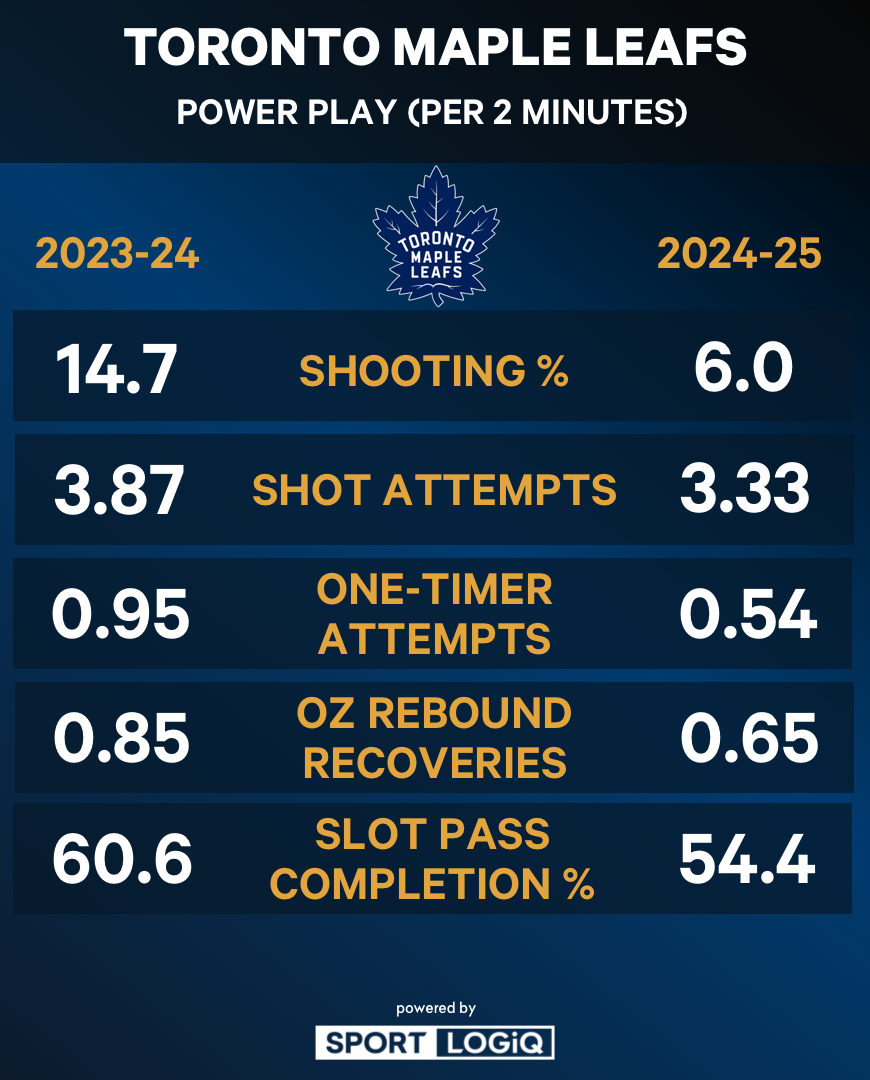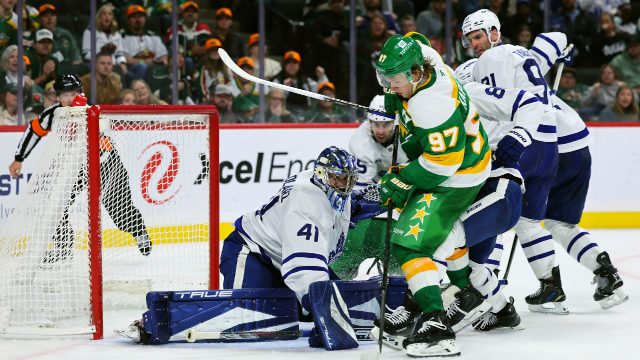
It’s not often you have to scroll all the way to the bottom of the rankings to find the Toronto Maple Leafs’ power play.
One month into the season, the Leafs have scored four goals on 40 power-play opportunities (10 per cent) — 31st in the NHL. Over the first six years of the Core Four era, Toronto converted 24 per cent of its chances during the regular season, the third-highest rate in the league between 2018 and 2024. (Since the Leafs’ first-round playoff series against the Boston Bruins this past spring, however, they are 5-for-61 on the power play over 20 games.)
“We’re working on it nonstop,” Leafs forward Mitch Marner told reporters Saturday following an 0-for-4 performance against the St. Louis Blues. “We’re trying to figure things out. It’s not like we’re not.”
Leafs coach Craig Berube has experimented with different looks on the power play, such as replacing Morgan Rielly with Oliver Ekman-Larsson as the quarterback of the top unit. Berube also separated Marner and Auston Matthews from John Tavares and William Nylander in hopes of finding balance. The combination of Matthews, Marner, Nylander, Tavares and Ekman-Larsson has accounted for three of the team’s four power-play goals this season.
In searching for the root cause of the Leafs’ power-play problem, there was not an obvious answer. For example, Toronto has generated a scoring chance on 40 per cent of its controlled entries, which ranks second in the league. The Leafs led the league in that category last season at 37.3 per cent. Their turnover rate in the offensive zone is down year over year as well, going from 10.9 per cent to 9.8 per cent.
One contributing factor could be that the Leafs are attempting fewer one-timers on the power play. Last season, 24.7 per cent of their total shot attempts were one-timers, including 18.6 per cent of their attempts from the slot. Those rates have dropped to 16.2 per cent and 11.4 per cent, respectively.
Twenty of Toronto’s 57 power-play goals last season came courtesy of the one-timer. Matthews, who was responsible for nine of them, has zero one-timer goals on seven attempts in 13 games. The percentage of Matthews’ power-play shot attempts that are one-timers has fallen from 41.4 last season (28.2 per cent in the slot) to 29.2 so far this season (18.8 per cent in the slot).
On Tuesday morning, the Leafs announced that Matthews is day-to-day with an upper-body injury. Without him, Toronto will go with Marner, Tavares, Nylander, Rielly and Matthew Knies on the top unit against Boston.
The Leafs’ lone one-timer goal on the power play this season came during their 2-1 overtime loss to the Minnesota Wild on Sunday. Matthews completed a cross-slot pass to Nylander, who rifled the puck past Filip Gustavsson to knot the score and end the Leafs’ six-game drought.
“We’ve talked about it for a bit here and decided to go with it,” Berube said about the five-forward unit that featured Matthews, Marner, Nylander, Tavares and Knies. “If you look at that power play, we shot a lot of pucks, and there was a little more directness, which was good. A seam opened up, and we hit it.”
Directness has been a key word for Berube. He wants his players to funnel more pucks on net, which will lead to more broken plays near the goal mouth. The Leafs are averaging 3.33 shot attempts on the power play per two minutes — down from 3.87 a season ago. They also are not recovering as many of their own rebounds, which limits second-chance opportunities.
Toronto has too much offensive talent to be this bad with the man advantage, but the Leafs can’t seem to figure out why things have gone awry.
“We’ve been working at it, and we’ve been struggling,” Rielly told reporters Sunday. “It’s not for lack of effort or lack of commitment to (the) process or anything like that. It just hasn’t gone our way.”
All stats via Sportlogiq







